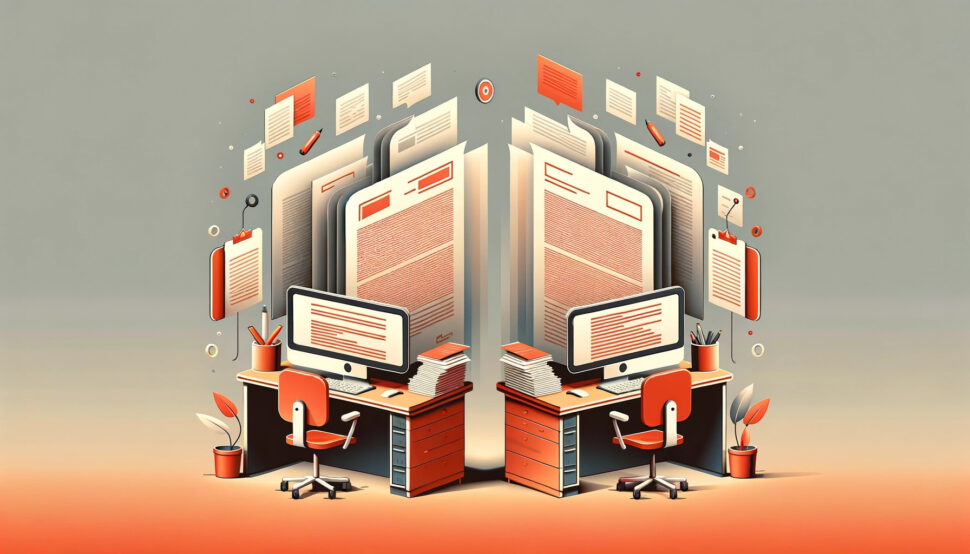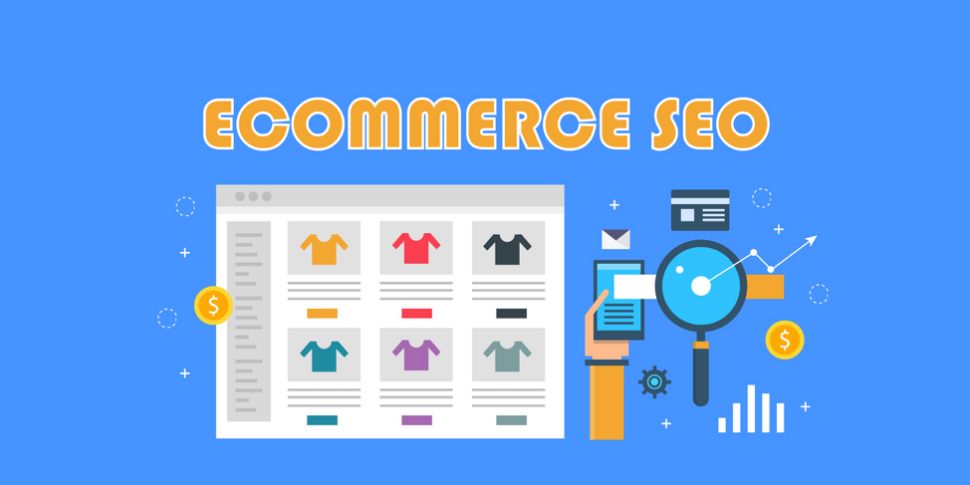The search for better, more efficient content marketing through search engine optimization (SEO) is a never-ending battle.
Having a strong mix of original, useful content is a key component of any online marketing strategy. And getting that content to rank high in search results is one of the best ways to get your product or message in front of your target market.
Google and other search engines are on a constant drive to provide more relevant, high-quality results for users. As a result, these engines deprioritize or degrade the rankings of repetitive content, penalize companies that try to game the system, and hide listings that seem irrelevant.
The overwhelming goal of search engines is to ensure users receive valuable, helpful content that provides a positive user experience. Your content needs to be valuable for the reader, or search engines won’t rank it, period. Creating unique content is part of that goal.
Why unique content is important
Most content marketers and SEO specialists understand this simple formula for web content:
Well-written, unique content + empirical data + user-generated content = content that ranks.
Unique content is valuable for the following reasons:
- It boosts credibility with your target audience
- It’s ranked higher by Google’s algorithms
- It improves E-E-A-T (experience, expertise, authoritativeness, trustworthiness)
- It can lead to more citations (and therefore backlinks)
- It adds value for your customers and potential customers
Long story short: having unique content helps you stand out on the search results page and with the customers you’re trying to win over.
Unique vs. duplicate vs. plagiarized content
Google and other search engines reward unique content, while penalizing duplicate and plagiarized content. Below, we’ll cover what each of these terms mean (and dispel some of the concerns around them).
Unique content
Unique content means original copy, images, graphics, etc. It means publishing information or insights you won’t find elsewhere (at least not in your exact form, wording, or style) and it means publishing it in an independent voice that’s unique to your brand or publication.
Unique content is authentic and trustworthy. It’s what you should strive for to provide the most value for both the search engines and your audience.
Duplicate content
Duplicate content scares many content marketers and SEO specialists because there’s a perception that Google automatically devalues duplicate content. This is true in cases where the content isn’t valuable and is just reposted in multiple places to try and get more eyeballs or game the keyword crawlers.
You may have heard that you need 100% content uniqueness for search engines, but as SEO expert Neil Patel notes, duplicate content is only penalized by search engines if it’s deceptive.
If you have a product description that appears in multiple pages on your site, then that product description isn’t necessarily going to hurt you on Google. The secret here is to make sure there’s a valid user experience (UX) benefit to hosting the duplicate content. For example, putting a pricing description on multiple pages of your main pages for a software as a service (SaaS) company is not going to hurt you, because it’s helpful information that adds value to the reader on the page.
Some old-school keyword optimization techniques, like creating a slightly different URL for a page with the exact same content, is an example of poor-quality duplicate content. If you have “/mortgage-broker-san-francisco” as one page’s URL slug and “/mortgage-broker-san-fran” as another, both with the same content, it’s likely to be downgraded by search engines. Even worse, it can make your audience confused.
Plagiarized content
Plagiarized content is one of the biggest sins you can commit as a company. It will hurt your SEO and alienate your consumers – oh, and it’s also illegal. Plagiarized content is not the same as duplicate content, because instead of just repeating your own content in multiple locations, you’re stealing others’ content and labeling it as your own. It’s the opposite of unique content.
If you’re outsourcing your content marketing strategy, you can use online tools like Copyscape to make sure you’re only publishing plagiarism-free SEO content.
We’re sure that plagiarizing content isn’t a mistake (or conscious effort) anyone reading this article would make, but you may fall victim to it.
Why do we bring this up? Creating unique, original content using your own empirical data and user-sourced content is a great way to protect against plagiarism. It makes it easier to prove you were the originator or creator of the content – which, in turn, can make it easier to have any content that plagiarizes your original content removed.
For the rest of the article, we’ll focus on tactics for creating unique SEO content. Let’s dive in.
How to create original content for SEO
The great news is that it’s extremely easy to create your own unique content. All you really need to do is:
- Write in your own brand style and voice
- Use natural language
- Use multiple sources for your data
- Leverage user-generated content
- Use empirical data to inform your content
When you use your own research and interpretations to add value to the information you’re providing your consumers, you automatically enhance the uniqueness and quality of your content. This is especially true when you add empirical data (information from your own experiences or observations) and user-generated content.
This is where PickFu shines. PickFu is a polling platform where you can ask a built-in panel of users (which you can segment to match your ideal audience) any question, and they’ll answer within the same day – often in 30 minutes.
So, using PickFu, you can poll your audience on the topics you’re writing about and use the data from those polls to inform your articles. Users include written comments on every poll, which you can include in your content to add some depth and authenticity.
This type of user-generated, real-person content is in part why Quora and Reddit are so successful. People trust comments and opinions from other people more than they do from brands. Including first party, human-driven data and feedback is both a boon for search engine algorithms and improves how users interact with your content.
Here at PickFu, we use this strategy regularly, and our content consistently ranks in the top three, or at least the first page, of our target search terms.
In this piece on slogan testing, we used the answers from PickFu polls to help inform and illustrate the points we made about slogan best practices. It’s this high-value, unique information that helps this article rank in position one across the United States.
Below is an example of responses from another poll:
You can also use survey results and statistics to help fill out your content and add value for your readers.
Our team interpreted data sourced from Statistica and ran our own polls with the PickFu panel to illustrate the key points made in this guide to building an app which ranks in the top five positions on Google.
This content is not just about selling your product. When we created this digital shelf optimization article, the goal wasn’t just to say “Hey, PickFu is great.” Instead, we used the results from our own PickFu polls to help validate our theories and support our hypothesis. The result is a stronger, more accurate argument that our users can rely on. It increased the credibility of PickFu as a consumer insights platform, while also giving Google a reason to rank our content highly on search engine results pages (SERPs).
Marketers, product planners, and SEO strategists can quickly and easily generate unique content by using PickFu surveys and polls.
If you’re already using PickFu to help with your product planning and market research it’s easy to use that data in your content program and actually help rank higher in search results.
Leveraging the results of your testing and research to generate articles, whitepapers, or marketing material that promotes your organization as a thought leader will also improve your reputation in the marketplace.
And as we mentioned above, this strategy can help you to demonstrate provenance and protect against plagiarism: it’s hard for someone to claim your content as theirs if you’ve sourced data from your own survey results.
More best practices for creating unique SEO content
To recap the main point in this article, the best way to create high-quality content is to be original, leverage your own thought leadership and expertise, and conduct independent research where possible.
Achieving good search engine rankings is a natural side effect of a well-considered content creation strategy. To put it simply, write quality content that answers questions your target audience is searching for.
This is another area where PickFu can help. For example, we asked respondents, “What do you wish your email client did better?” to gauge common pain points that a potential new app could solve.
One respondent answered, “I do use Gmail and sometimes I wish it had a mass delete button. That way I can get rid of certain mail that isn’t used to me anymore or it’s junk mail.”
If we were running content marketing for an email plug-in app, maybe we’d be able to write a blog article called “How to mass delete emails in Gmail.” By running market research surveys and reading the panel’s comments, we can generate unique, valuable content ideas for our audience.
Another best practice is to change how keyword research informs your SEO strategy. Keyword stuffing and other shortcuts are less and less effective given modern changes to Google’s algorithms. The new algorithms reward pages with a low bounce rate – that is, pages where the user remains on the page or even clicks through to other pages on your website. The only way to reliably achieve these goals is with the kind of content your target customer finds valuable.
There are technical best practices too, including using the right headings and content structure, making your content scannable, and improving readability and accessibility. It’s also important to label your metadata and tags with relevant terms – even though these don’t help SEO directly, it can enhance clicks and engagement, which impact rankings indirectly.
While your content should be SEO-friendly, SEO shouldn’t be the main goal of your digital marketing. Focus on your audience, and add value for them. Infographics were shunned by SEO managers in the past because the content wasn’t as crawlable and didn’t show up in a Google search. These days, we know that an infographic can be extremely helpful content for users. Visual content is also more shareable on social media platforms and a great way to get backlinks. A variety of formats based on how (and where) your audience prefers to consume information is key.
By using your own personal experiences and the personal experiences of your customers to help inform your content marketing strategy, you’ll organically build your website’s SEO and improve the customer experience.
Add PickFu to your content creation arsenal
Amplify your content marketing and generate unique content using PickFu’s polling platform. It can even help you improve your existing content and refresh it for new audiences.
A unique content strategy helps improve your SEO, boosts your credibility with your target market, and sets you apart from the crowd of similar content.
It’s free to sign up for an account, and polls start at just $15. Sign up today to start creating original content with PickFu!
Unique content FAQs
What is unique content for my website?
A unique piece of content is one that’s original, independent, and doesn’t exist anywhere else on the internet. Duplicate content is material which you might republish or reuse on multiple web pages: Even though it’s original, it’s not unique. Plagiarized content is stolen material, wrongly claimed as your own.
What content improves SEO?
Content that closely matches the answer to a search query can improve SEO, but only if it’s truly relevant to the user. The highest-ranking content is informative, unique, original, and includes insights drawn from empirical data and the personal experiences of either the writer or people the writer used as sources. This can include survey respondents and their comments.
Can AI create high-ranking content?
More and more marketers are using AI tools to help develop and generate website content. The good news is, this type of tool is useful for creating content at scale, but a human touch is still a factor. If you use AI to help generate content ideas or framework, and infill that material with your own unique data, including responses from PickFu surveys, you will have a better chance at success with your AI-generated articles.
What’s the best way to rank for “long tail keywords”?
Long tail keywords are the more niche and obscure words keyword researchers find correlate with higher-ranked relevant keywords and help define search intent. In-depth articles that aim to answer specific questions have the best chance of ranking for long-tail keywords.







